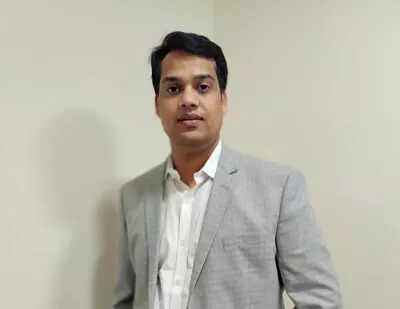 Credit Guarantee Fund Trust for Micro and Small Enterprises (CGTMSE) has a number of tech modernization programs underway. With an annual business turnover of around 2000 crores, the credit provider serves MSMEs, BFSI firms and NBFCs.
Credit Guarantee Fund Trust for Micro and Small Enterprises (CGTMSE) has a number of tech modernization programs underway. With an annual business turnover of around 2000 crores, the credit provider serves MSMEs, BFSI firms and NBFCs.According to Harish Gupta, Head-IT, CGTMSE, the organisation’s first priority is to move its on-prem cloud applications to a cloud infrastructure. CGTMSE is adopting microservices-based application architectures to consolidate all its core business applications.
Earlier, CGTMSE had an on-premises IT setup – a shared data center in a co-location model. This constrained the organisation’s ability to scale as well as manage IT infrastructure or platforms on demand.
“As a result, we were unable to effectively manage peak loads. It also restricted our ability to integrate with third-party platforms. Plus, we could not even opt for any SaaS/cloud-based services/platforms as well,” said Gupta.
That’s why the company decided to move to the cloud. Since the migration, a number of advantages have been gained, such as the pay-per-use feature, the ability to scale workloads on demand etc.
“More importantly, it has allowed us to accelerate our innovation cycles, and take advantage of new capabilities like API integrations and micro-service-based architecture, amongst others”, he added.
The migration process
According to Gupta, with hands-on support from Oracle’s Cloud Engineering team and Path Infotech’s team (implementation partner), CGTMSE’s migration experience was smoother. “Their support on middleware, DBA and application performance testing, along with the RTO in DR drill was commendable.”
Using Oracle Cloud Infrastructure, the company is able to innovate faster and better, in 50 per cent less time than earlier. A 25 per cent improvement has also been witnessed in transaction cycle times.
“Our application migration time has gone up significantly, allowing us to focus more on our core business, while also helping us save significant costs, as we now have an OPEX model for IT,” maintained Gupta.
With the cloud migration, CGTMSE has also benefited from an upfront cost savings to the tune of 30-40 percent compared to its previous on-premises IT setup.
Modernising other business processes
In the near term, the organisation is planning to move traditional accounting and HR systems to SaaS – i.e. subscribe to a cloud based ERP solution. The process of moving monolithic application architecture onto a more modern, container-based micro-services architecture has also been initiated.
“Business Intelligence and Mobility are in key focus this year. One of our key data management goals is to achieve a reduction in manual data entry by at least 50 percent this year, so we facilitate API based integrations for hassle free data exchange with banks and other agencies,” said Gupta.
The customer onboarding and servicing part of the transaction journey are completely digital. The company’s Guarantee Management System (GMS) along with core business application will be on micro-service-based architecture and will encompass a mobility solution, a BI solution, and API based integrations with CBS.
“We are in the process of fully automating our processes of receivables and payables with host-to-host API Integration with our core banks. We are also exploring a solution for the management of API services,” Gupta averred.



